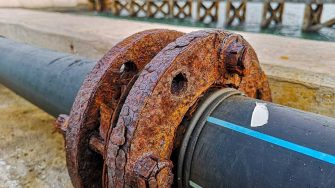
Dry corrosion or oxidation occurs when oxygen in the air reacts with metal without the presence of a liquid.
Typically, dry corrosion is not as detrimental as wet corrosion, but it is very sensitive to temperature. If you hold a piece of clean iron in a flame, you will soon see the formation of an oxide layer!
Most engineering metals have a slow oxidation rate in the atmosphere at ambient temperature.
The differences in the rate of dry corrosion vary from metal to metal as a result of the mechanisms involved.
In dry corrosion the oxygen has to be able to make contact with the metal surface.
Initially this is not a problem, but as soon as corrosion starts to occur the oxide layer, that forms on the metal surface, will limit the amount of oxygen that can further react with the metal.
